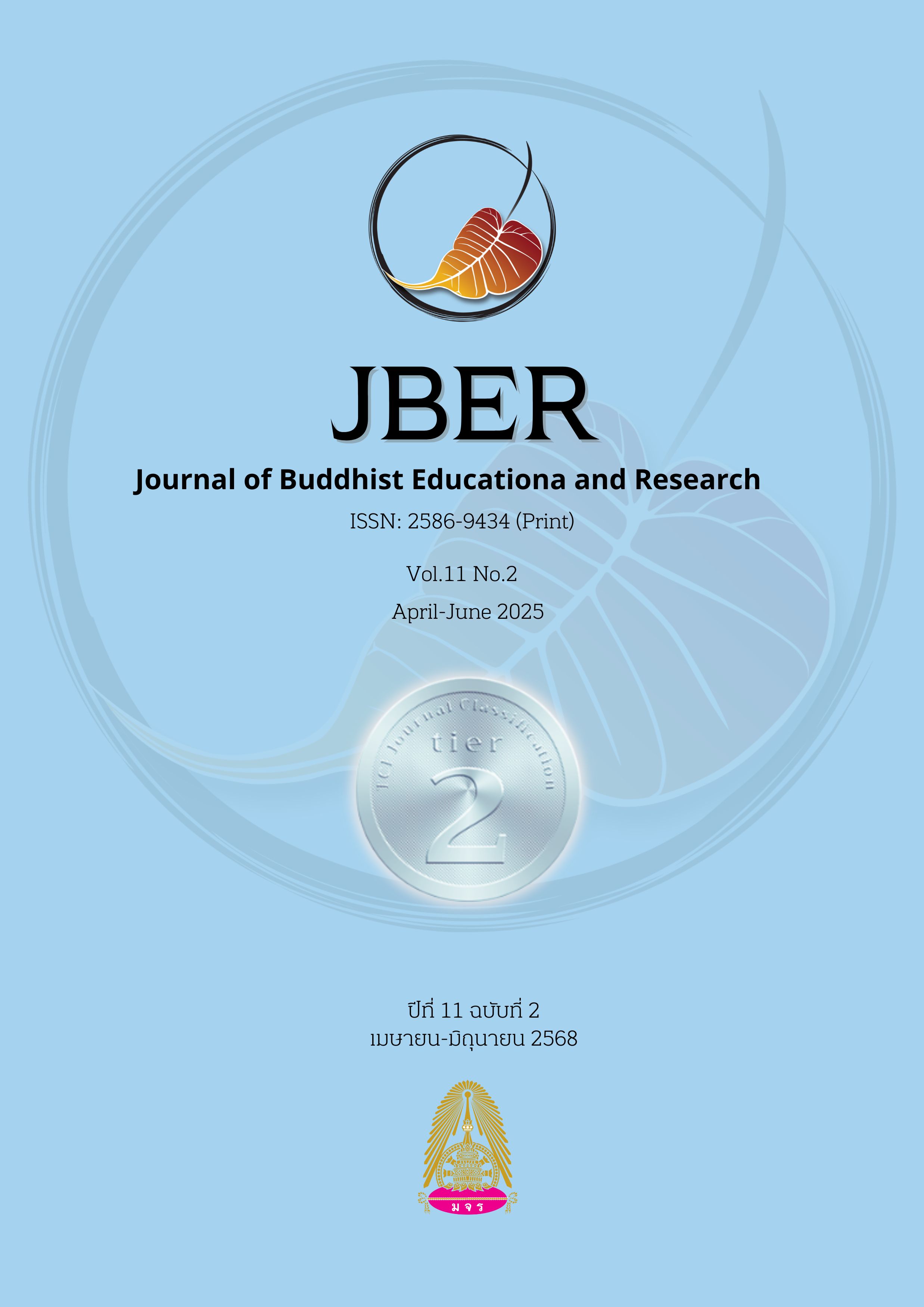Guidelines for Promoting Motivational Characteristics for School Administrators of Mae Yuam-Mae Khong Educational Management Center under the Mae Hong Son Primary Educational Service Area Office 2
Keywords:
Development guidelines, Human resource management, Digital eraAbstract
This research employed a mixed-methods approach with the following objectives: 1) to examine the current conditions and challenges in the development of personnel administration in digital-era schools within the Oakhaburi group under the Phichit Primary Educational Service Area Offices 1 and 2; and 2) to propose strategies for enhancing personnel administration in these schools. The population comprised 15 school administrators, 164 teachers and educational personnel (a total of 179 individuals), and 9 experts. Data were collected through questionnaires and interviews, and analyzed using frequency, percentage, mean, standard deviation, and content analysis. The findings revealed that overall personnel administration in digital-era schools was rated at a high level (μ = 3.95). The highest-rated dimension was workforce planning and position allocation (μ = 3.98), followed by discipline and disciplinary maintenance (μ = 3.96). Recruitment and performance enhancement were both rated equally as the lowest (μ = 3.92). The recommended strategies for developing personnel administration in digital-era schools emphasize fostering participation among personnel by encouraging input on workforce planning and related tasks to ensure comprehensive and responsive planning. Furthermore, schools should establish a clear organizational structure that systematically defines roles and responsibilities to enhance operational efficiency. Regarding discipline, school leaders should serve as role models in the appropriate, polite, and regulation-compliant use of digital media. Additionally, an internal supervision committee should be established to collaboratively plan, monitor, and supervise personnel management systematically. These strategies are considered suitable for improving the efficiency of personnel administration and aligning it with the demands of modern education.
References
ปัณณวิชญ์ ศุภกฤษ์ชัยวัชร์. (2565). แนวทางการพัฒนาการบริหารงานบุคคลขององค์การบริหารส่วนจังหวัดระยอง (วิทยานิพนธ์รัฐศาสตรมหาบัณฑิต). มหาวิทยาลัยบูรพา.
พิทักษ์ ภูศรีฤทธิ์. (2565). การบริหารงานบุคคลตามหลักธรรมาภิบาลของสถานศึกษาขั้นพื้นฐานสังกัดสำนักงานเขตพื้นที่การศึกษาประถมศึกษาร้อยเอ็ด เขต 3 (วิทยานิพนธ์พุทธศาสตรมหาบัณฑิต). มหาวิทยาลัยมหาจุฬาลงกรณราชวิทยาลัย วิทยาเขตขอนแก่น.
ภาสกร เชื้อเมืองพาน. (2559). สภาพปัญหาและแนวทางการพัฒนาความมีวินัยของข้าราชการครูสังกัดสำนักงานคณะกรรมการการอาชีวศึกษา จังหวัดลำปาง (วิทยานิพนธ์ศึกษาศาสตรมหาบัณฑิต, แขนงวิชาบริหารการศึกษา). มหาวิทยาลัยสุโขทัยธรรมาธิราช.
ศศิวิมล คนเสงี่ยม. (2563). การบริหารงานบุคคลของผู้บริหารสถานศึกษา สังกัดสำนักงานเขตพื้นที่การศึกษาประถมศึกษานครนายก. มหาวิทยาลัยเทคโนโลยีราชมงคลธัญบุรี.
สุชาดา คำพิทูรณ์. (2565). การบริหารงานบุคคลในสถานศึกษา สังกัดสำนักงานเขตพื้นที่การศึกษาประถมศึกษาชัยภูมิ เขต 3 (วิทยานิพนธ์ศึกษาศาสตรมหาบัณฑิต). มหาวิทยาลัยมหามกุฏราชวิทยาลัย.
สำนักงานเลขาธิการสภาการศึกษา. (2560). แผนการศึกษาแห่งชาติ พ.ศ. 2560–2579. กรุงเทพฯ: บริษัท พริกหวาน กราฟฟิค จำกัด.
สำนักงานคณะกรรมการข้าราชการครูและบุคลากรทางการศึกษา. (2562). รายงานประจำปีเกี่ยวกับการบริหารงานบุคคลของข้าราชการครูและบุคลากรทางการศึกษาประจำปีงบประมาณ พ.ศ. 2562. กรุงเทพฯ: โรงพิมพ์สำนักงานข้าราชการครูและบุคลากรทางการศึกษา.
สำนักงานเขตพื้นที่การศึกษาประถมศึกษาพิจิตร เขต 1. (2566). รายงานผลการบริหารและพัฒนาทรัพยากรบุคคล ปีงบประมาณ พ.ศ. 2566.
Downloads
Published
How to Cite
Issue
Section
License
Copyright (c) 2025 Journal of Buddhist Education and Research (JBER)

This work is licensed under a Creative Commons Attribution-NonCommercial-NoDerivatives 4.0 International License.





